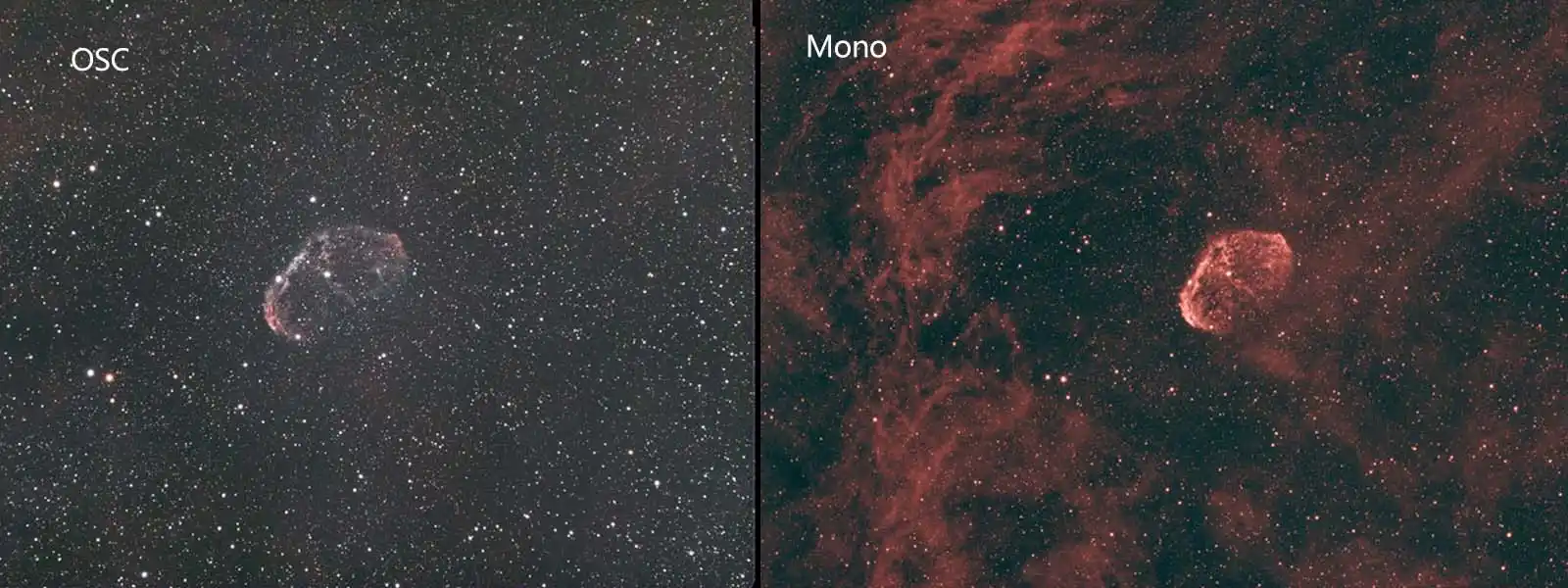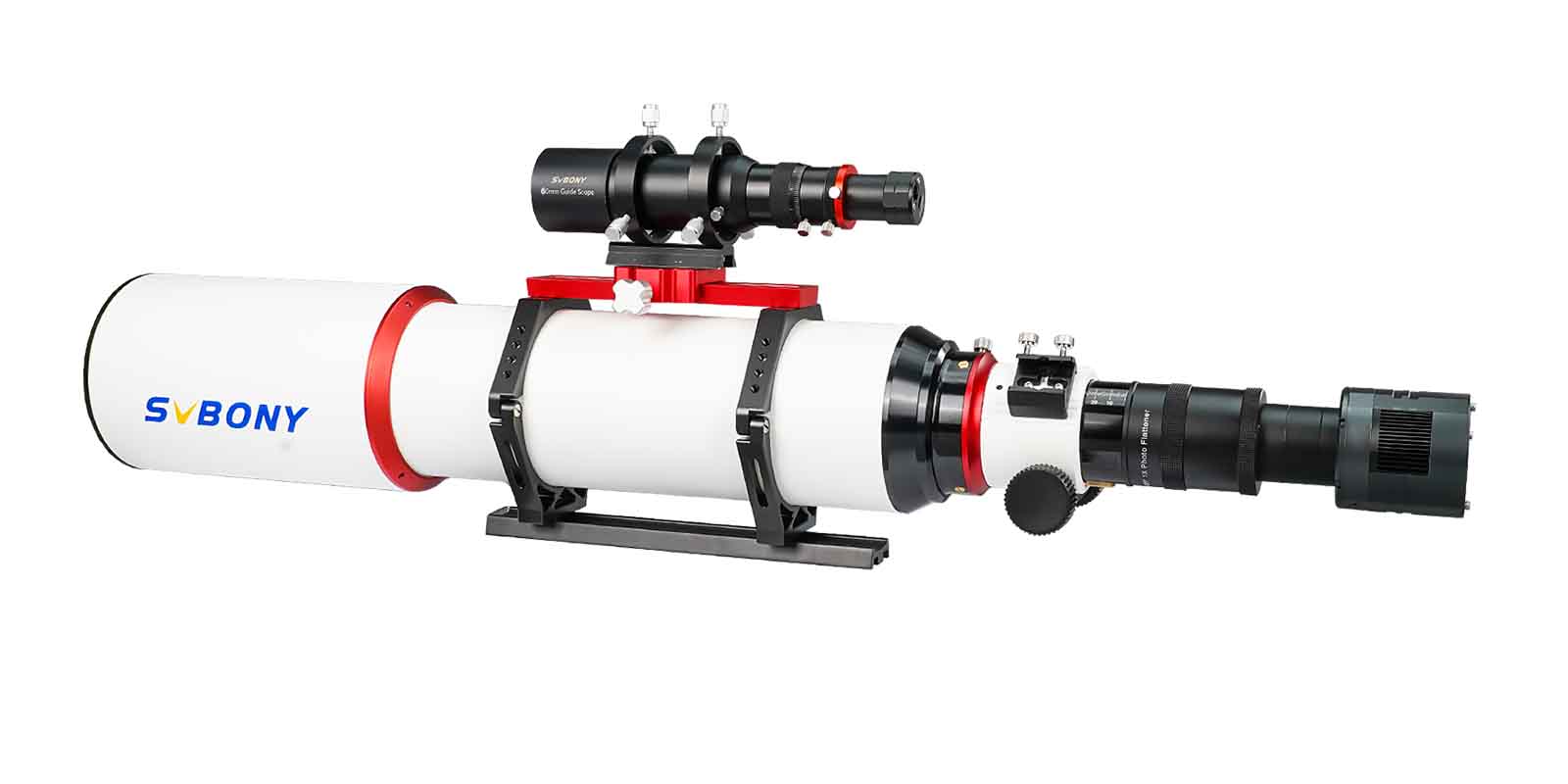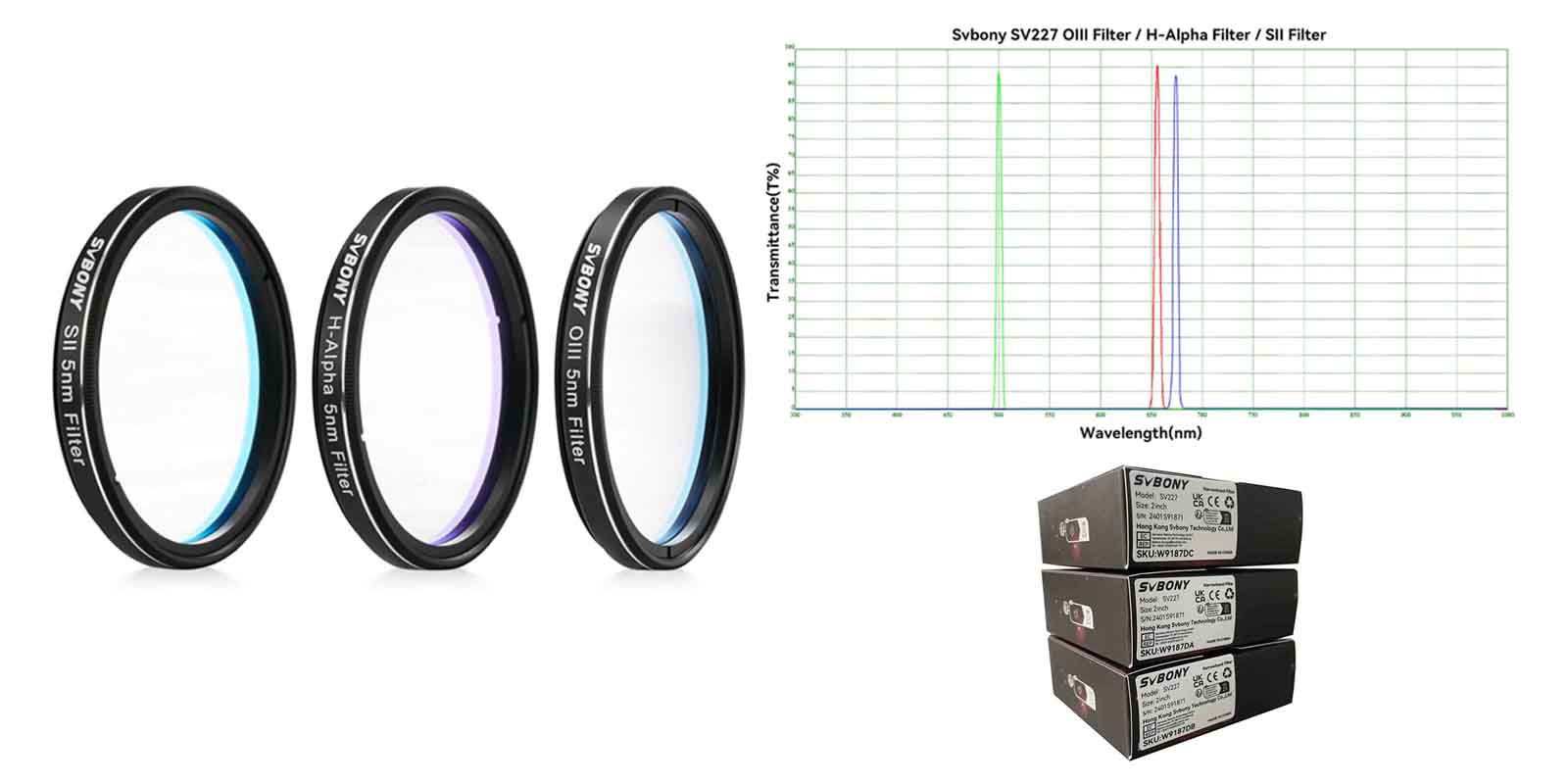Mono vs OSC Cameras?

Mono vs OSC Cameras?
When it comes to astrophotography, choosing the right camera can significantly impact the quality of your images and your overall experience. Among the various options available, two popular types are monochrome (mono) cameras and one-shot color (OSC) cameras. While many enthusiasts often argue about which option is better, recent experiences highlight some intriguing advantages of using a mono camera, particularly with narrowband (NB) filters.
The Speed Debate: Mono is Faster Than You Think
A common point of contention in the photography community is whether mono cameras are slower than OSC cameras. However, evidence suggests that this is not the case. Recently, I came across an impressive comparison between two images taken of NGC 6888 using different methods.
The first image was captured over approximately 4.5-5 hours using an OSC camera equipped with dual-stacked filters to simulate dual-band imaging. In contrast, the second image, taken with a 6nm hydrogen-alpha filter using a mono camera, only required 1 hour and 48 minutes of exposure time. Despite having less capture time, the data gathered from the mono camera was remarkably more detailed and richer than that obtained from the OSC setup. This striking difference showcases how a tighter narrowband filter can enhance image quality, especially when compared to synthetic dual-band filtering.

The image above is excerpted from https://stargazerslounge.com/topic/396018-mono-really-is-faster/
Moreover, it's important to note that this impressive result was achieved on a full moon night—when light pollution is at its peak—and during a season where true astronomical darkness doesn't exist. If you consider these conditions, it’s clear that a dedicated mono camera like the SV605MC could yield even more significant results under better circumstances.
Understanding One-Shot Color Cameras
OSC, or One Shot Color, refers to a type of camera designed to capture full-color images in a single exposure. This feature makes OSC cameras convenient and easy to use, allowing for decent color images with minimal effort. However, when using an OSC camera for astrophotography, it's essential to take numerous photos and combine (or stack) them to achieve a high-quality final image. Essentially, the "one shot" capability provides a basic color image rather than a polished final product.
While many people opt for OSC cameras due to the perceived convenience of capturing color images in a single shot, there is more to consider. The reality is that what an OSC camera delivers is not a genuine "one-shot" color image. Instead, it produces images that can be described as "quarter of a shot red, half a shot green, and quarter of a shot blue." This uneven distribution can lead to less accurate color representation and reduced detail.
How Mono Camera Work?
Mono cameras operate differently than OSC cameras. Instead of capturing color images, they produce monochrome (black and white) images. To create color images with a Mono camera, you must use filters placed in front of the camera sensor. For example, to achieve an image similar to what an OSC camera captures in one shot, you would first use a red filter to take a photo, then switch to a green filter for another shot, followed by a blue filter for the final image. After taking these individual photos, you would digitally combine them to form a complete Red Green Blue (RGB) image. Like OSC cameras, Mono cameras also require multiple exposures that need to be stacked to create a high-quality final image for editing.
Mono cameras allow photographers to capture individual wavelengths of light through separate filters (such as LRGB or narrowband filters). This method enhances control over the imaging process, enabling you to create more detailed and vibrant final images by stacking multiple exposures.
The image above is SVBONY SV550 triplet APO with SV605MC
Dual Band Filters: An Interesting Point of Discussion
Another aspect worth mentioning involves dual band filters. Some might wonder how these filters interact. The initial assumption may be that the first narrowband filter blocks certain light that the second filter could pass unless their wavelengths overlap. Exploring how dual-band filters operate reveals that the filtration of each passband indeed can depend on the others, affecting overall image quality.
These dual-band filters are real game-changers for many OSC astrophotographers, especially those in cities. They allow urban astrophotographers to keep the benefits of OSC and mitigate the main drawback, i.e. not being able to take narrowband images.
Why Choose Mono Camera?
To clarify, while Mono cameras with filters offer distinct advantages over OSC cameras paired with dual-band filters in many situations, it’s important to note that dual-band filters may not work effectively with every telescope or target. Nonetheless, for the first time, OSC cameras can now compete in urban environments.
One of the key benefits of using a Mono camera is its ability to capture Luminance data, which enhances overall image quality and allows for the creation of LRGB images. More importantly, Mono cameras are not limited to just gathering RGB data; they can utilize specialized narrowband filters that permit only specific wavelengths of light to reach the sensor.
What's the Function of SHO Filters?
Notable examples of these narrowband filters include those designed for Sulphur-II, Hydrogen-alpha, and Oxygen-III, collectively referred to as SHO. These sho filters are considered the "Holy Trinity" for astrophotographers because many astronomical objects, such as nebulae, may be almost invisible when captured in RGB but will exhibit vibrant brightness when imaged using SHO filters. Now the mono sho imaging is popular among the veteran deep-space photography enthusiasts.
Devices for OSC Imaging & Mono SHO Imaging
| SVBONY OSC Imaging Bundle | ||
| SV605CC | The OSC camera that enables you to capture RGB images. | $559.99 |
| SV220 Dualband Filter | This allows your OSC camera to record Hydrogen-alpha and Oxygen-III (HO) narrowband wavelengths. | $119.99 |
| SV226 Filter Drawer | While not essential, this accessory facilitates easy swapping of filters. | $49.99 |
| SVBONY Mono Imaging Bundle | ||
| SV605MC | The monochrome camera used for astrophotography. | $649.99 |
| 1.25/2inch LRGB Filters | These allow you to capture RGB data similar to an OSC camera, with the added advantage of capturing Luminance (LRGB). | $152.99 |
| SV227 SHO Narrowband filters | These enable you to record Sulphur-II, Hydrogen-alpha, and Oxygen-III (SHO) narrowband wavelengths. | $332.99 |
| SV226 Filter Drawer with x6 Holder | This setup allows for convenient switching between different filters. | $103.99 |
Some Common Misunderstandings
Taking images with an OSC camera is relatively straightforward, but Mono requires additional considerations, such as filter changes and planning around local sky conditions. For instance, if clouds interrupt your imaging session after gathering Red and Green data, capturing Blue becomes difficult. Although acquiring equivalent RGB data with a Mono camera can sometimes be faster due to less wasted green light, this advantage is often offset by challenges like cloud cover and the need for filter swaps.
Thus it's commonly assumed that processing OSC images is simpler due to their ready-to-use color output, the reality is more complex. OSC images often have an excess of green that needs correction, and serious editing typically involves splitting and recombining channels—similar to the workflow for Mono images. Ultimately, the complexity of image processing is fairly comparable for both types.
Conclusion
While Mono is theoretically the superior option, especially regarding sensitivity and detail, the practical difference in resolution may not always be noticeable. When deciding between an OSC or Mono camera, consider which type you find more enjoyable to use, as enjoyment is key to getting the most out of your astrophotography hobby.
Happy photography. Hope you all clear skies every day!










